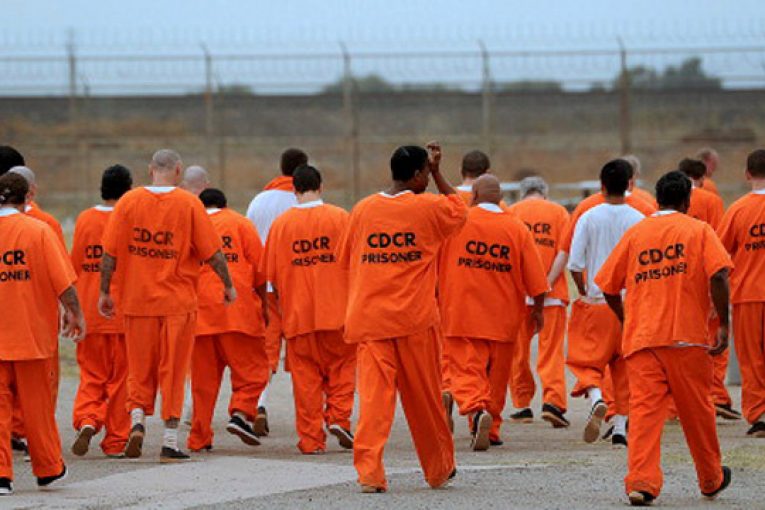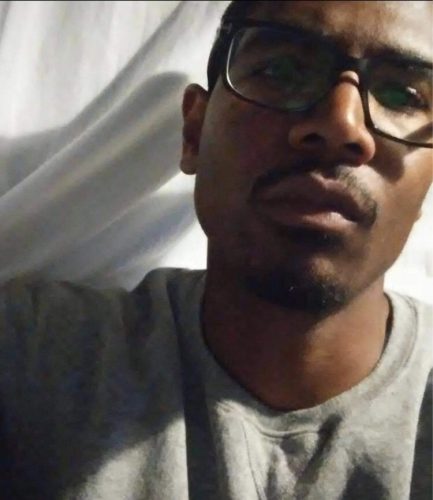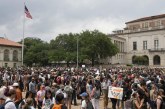

By Jamier Sale
SACRAMENTO – Why are calls mounting for mass decarceration around the state of California? A look at recent history and past events provide some insight.
January 13 marks the 51st anniversary of the killing of Prisoners Human Rights activist W.L. Nolen alongside Alvin “Sweet Jugs” Miller and Cleveland Edwards on the yard of Soledad Prison in 1970 by prison guard Opie Miller.
Nolen was pursuing a lawsuit against prison authorities for their use of strip cells and other forms of extreme punishment later ruled unconstitutional.
“Back then they had what they call “strip cells”, I’ve been in those strip cells,” recalls Terry Samaki Williams of Stockton, California. “They mean literally stripped down butt naked, no socks, no shorts, no nothing, and threw you in a cell with a cement slab, no mattress, no blanket, nothing. As time went on, the law forbade them to continue that practice.”
Despite forced changes as the result of various Supreme Court rulings, California prisons remain overcrowded today and in need of reform. Calls to reduce the prison population have been growing in recent months in reaction to the rapid spread of the virus behind bars.
All 36 of California’s State prisons are currently experiencing outbreaks of COVID-19.
As of Jan. 13, 2021, according to CDCR statistics, there were 2,637 staff cases of infection in the California Prison system.
Transfers between institutions have been particularly harmful in recent months as what was first a few cases brought in by staff exploded into thousands of people infected, directly reflecting infections around the state where shelter in place orders have been issued, businesses closed and holiday travel discouraged.
A manufactured crisis
In March 2020, a crisis at San Quentin State Prison (SQSP) resulted in dozens of deaths after COVID-19 positive prisoners were transferred to the prison from California Men’s Colony. Currently, several SQSP prisoners are petitioning for release citing medical vulnerabilities and overcrowding.
CDC(r) responded to the outcry inside and out by yet again transferring prisoners from SQSP to Corcoran State Prison (CSP) in December 2020. At the time of their transfer, San Quentin had four active cases while Corcoran had 50.
According to a Change.org petition titled Stop CDCR Outbreak: Releases Not Transfers, “The incarcerated men allege in court filings that prison officials violated their Eighth Amendment right against cruel and unusual punishment by exposing them to the virus.”
Another recent transfer to Corcoran was Edward Carter Jr. from Wasco State Prison (WSP) in the Fall of 2020. Shortly after his transfer, the California Division of Occupational Safety and Health fined WSP $16,360 for failure to put an effective disease control exposure plan into place.
Carter’s experience at Corcoran would show that this institution was hardly better prepared.
Once at CSP, Carter spent 30 days in quarantine and tested negative for the virus five times. After he was released to the mainline at CSP, he caught COVID-19 within two weeks. Suffering migraines, dizziness and vomiting, he was left to die in his cell, provided only with daily vital checks to see if he was still alive.
Instead of adequate medical treatment, he was forced to recover in an isolated Segregated Housing Unit (SHU) cell. But his experience stands with those of thousands more that demonstrate the suffering that has resulted from institutional negligence and dehumanization. Although he survived the ordeal, there have been hundreds in the very same institution, in the same circumstances, who did not.
If prison expansion was not such a profitable business, it is likely that Carter would not have been incarcerated long enough to catch COVID-19 in the first place. Carter is currently serving his sixth year after being sentenced to three years for a manslaughter charge with an additional 10-year gang enhancement as mandated by the 1987 STEP Act.
This omnibus bill was championed by Ronald Reagan as the key to winning the War on Drugs. The STEP Act was followed by the now infamous 1994 Crime Bill authored by President Elect Joe Biden. Together, these two federal laws continue to fuel mass incarceration and what author Michelle Alexander calls “The New Jim Crow.”
California prisons are dangerously overcrowded currently due to these Federal policies that enshrine gang enhancements, mandatory minimums and lack of access to higher education.
This is not the first time that CSP has found itself at the center of controversy since its opening in 1988. According to Terry Samaki Williams, a formerly incarcerated Prisoner Human Rights activist and survivor of California’s torturous Segregated Housing Unit (SHU) program:
“Again, it comes back to what we’ve experienced, like I told you way back in the 1970s, the truth. They don’t want the truth to get out there. I was there during all those years we were going through those Gladiator fights in Corcoran. I was right on those yards,” said Williams.
According to Williams, “They (staff) were betting. Then again, despite the eventual lawsuit, how many people got killed? About eight before the Feds stepped in and put a halt to it. After eight people were murdered. Shot in the back of the head. These weren’t stabbings. These weren’t inmates stabbing each other, these were guards. If you see this block on the top of my head, it came from a block where they shot me after they set up a fight and I did what I had to do to survive, then they just bust on me.”
Can’t stop, won’t stop
The pandemic has exposed once again exposed the humanitarian crisis of overcrowding in California prisons and the continued transfer of prisoners has only served to further exacerbate an already grievous situation.
Currently there are protests planned by Stronger Together using the hashtag #StopCDCrOutbreak on Jan. 16 at Gov. Gavin Newsom’s home in East Sacramento. The protesters are demanding an end to CDC(r) transfers and a drastic reduction in the State’s prison population.
Connecting his struggles of the past to those of the present, Williams said of himself and other Prisoner Human Rights activists around the country, “Our blood is in this. Our lives are not the first to be put on the line. If you put me in Hell, I’ll go down there and try to fight against that. I ain’t gonna give up. ”
Jamier Sales is a Vanguard Contributor and Sacramento Educator
To sign up for our new newsletter – Everyday Injustice – https://tinyurl.com/yyultcf9
Support our work – to become a sustaining at $5 – $10- $25 per month hit the link:




